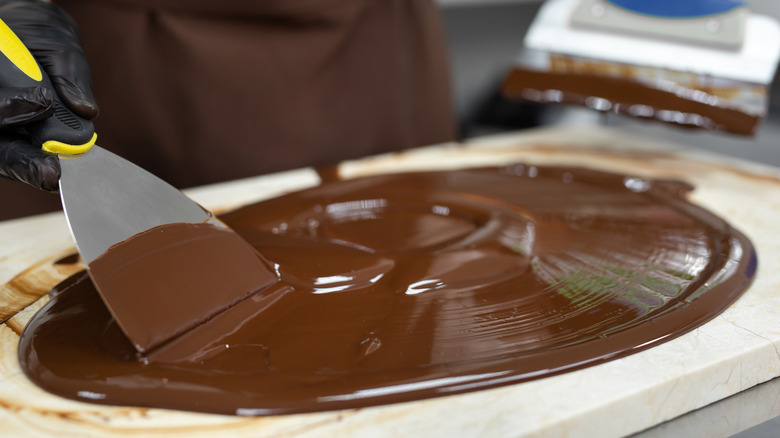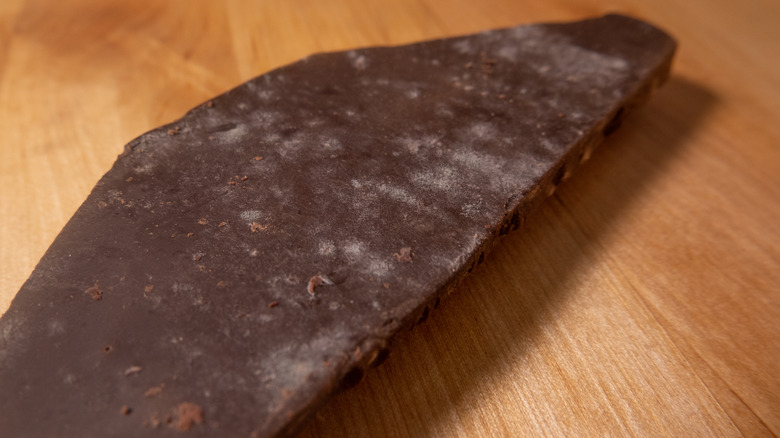Why Chilling Tempered Chocolate In The Refrigerator Is A Huge Mistake
Tempering chocolate gives it a beautifully glossy finish and helps it set perfectly for dipping and coating other ingredients. The process involves heating and cooling chocolate, which makes it less prone to melting. Chocolate tempering at home can seem daunting, and the attention to detail required can deter a lot of bakers. From controlling the chocolate's temperature to constantly stirring it, there are a number of rules to follow for a chocolate tempering success.
You may think that you're in the clear once your tempered chocolate is in its cooling stage, but there is an easy way to ruin your tempered chocolate even at that point — namely, by putting it in the refrigerator to chill. It may seem logical to refrigerate or freeze your tempered chocolate and speed up the setting process, but this will actually undo all of your hard work, and ultimately result in a dull finish. So if you want smooth, well-tempered chocolate, avoid your fridge at all costs.
Refrigerating your chocolate will cause blooming
The condensation in your fridge might cause your chocolate to bloom, which means it will have a white, powdery surface layer and a dull finish. Once you have tempered your chocolate on the stovetop, always allow it to cool at room temperature. Tempered chocolate will also solidify faster than regular chocolate, so there is really no need to refrigerate it. When your chocolate has set, make sure to store it in an airtight container at room temperature (around 68–74 degrees Fahrenheit). This is the best way to keep it firm and give it a snappy texture.
If you're reading this a little too late and your fridge or freezer has already messed up your tempered chocolate, there may still be a solution. Bloomed chocolate is an easier fix than burnt chocolate, as it's actually possible to remelt and temper your chocolate once more. Simply follow your recipe steps again, this time letting your chocolate cool at room temperature. Your tempered chocolate should now be ready to use for dipping, making truffles, or filling chocolate molds.

